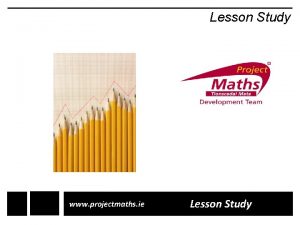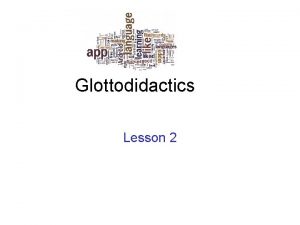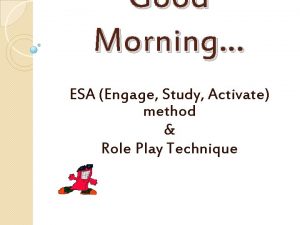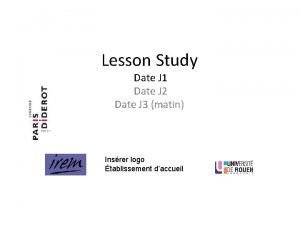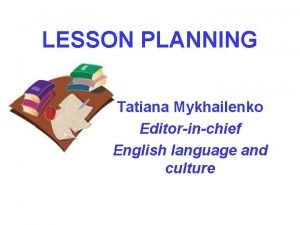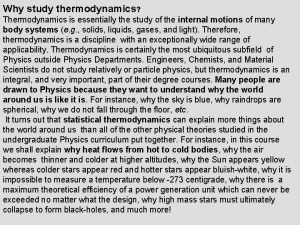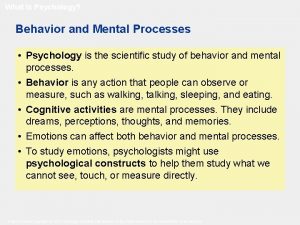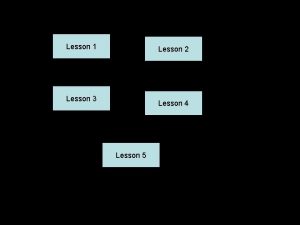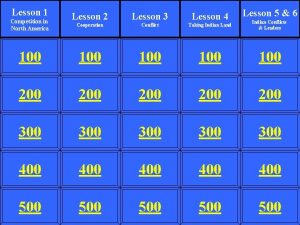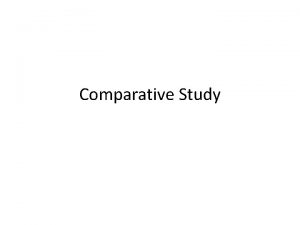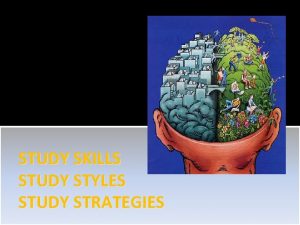Lesson Study www projectmaths ie Lesson Study Lesson























































- Slides: 55

Lesson Study www. projectmaths. ie Lesson Study

Lesson Study What is Lesson Study? Based on: Collaborative Planning Discuss and plan a lesson to support a common goal Teaching and Observing Observe students working during the plan by one of the team of teachers Analytic Reflection Selected work of students lesson summarised by the teacher Ongoing Revision Based on Japanese Lesson Study Introduced through TIMSS (1995) School level: Same year level One teacher teaches lesson , others observe lesson Cluster of schools Conferences Revolves around a broad goal…. develop problem solving, Groups of teachers meet to discuss mathematical content, explore methods of teaching, and anticipate student reaction. Building on individual experience and collective strategies a viable Lesson Plan is created

Lesson Study Lesson Observation: A team member teaches the lesson as the other teachers view (in classroom/video) and record the unfolding plan and student reaction Reflection: Teachers meet for a critical analysis session Post discussion begins with the teacher who taught the lesson self assessment Revision: Another team member might teach the lesson and revise the lesson for further feedback Lesson Study is not about perfecting a single lesson but about improving teaching and learning. Providing insights into : • the many connections among teachers, students, mathematics and the classroom experience

Process Step 1: Identify the problem & establish a focus • • Stage 1: Develop an overarching goal for the lesson Stage 2: Develop the research question in the Lesson Study Group

Step 2: Design & Plan the research lesson • Agree on a goal • Choose a strand • Choose a topic / lesson

Step 3: Teach & Observe/Video the lesson • • During T & L Lessons Academic Learning How did students’ images of …. . change after the ………. . ? Did students shift from ……. to …………? What did students learn about …………. . as expressed in their copies? Motivation Percent of students who raised their hands Body language, “aha” comments, shining eyes Social Behaviour How many times do students refer to and build on classmates’ comments? Are students friendly and respectful? How often do 5 quietist students speak up? Student Attitudes towards the lesson What did you like and dislike about the lesson? What would you change the next time it is taught? How did it compare with your usual lessons in_____?

Step 4 & 5 : Share what you have learned • Write a reflection • For more information on Lesson Study

Uses of Lesson Study • Support the teacher, by providing a detailed outline of the lesson and its logistical details (such as time, materials). • Guide observers, by specifying the "points to notice" and providing appropriate data collection forms and copies of student activities. • Help observers understand the rationale for the research lesson, including the lesson's connection to goals for subject matter and students, and the reasons for particular pedagogical choices. • Record your group's thinking and planning to date, so that you can later revisit them and share them with others.

Maths Counts Insights into Lesson Study 9

Insights into Lesson Study • Introduction: Focus of lesson • Student Learning : What we learned about students’ understanding based on data collected • Teaching Strategies: What we noticed about our own teaching • Strengths & Weaknesses of adopting the Lesson Study process 10

Introduction: mathematical focus • To inform us as teachers and our students, on misconceptions in simplifying algebraic fractions (inappropriate use of “cancelling”) 11

Introduction: mathematical focus Why did we choose to focus on this mathematical area? • Students were making recurring errors in simplifying algebraic fractions. • This was hampering work not only in algebra but also in coordinate geometry, trigonometry and would hamper their future work in calculus. 12

Introduction Planning: • We discussed typical errors in simplifying algebraic fractions • We compiled a background document on the topic • We designed a set of questions to confront students’ common misconceptions ( diagnostic test) Resources used: • Diagnostic test • Lesson to develop a common strategy for simplifying fractions • Document with diagnostic test answers to be corrected by students following the lesson 13

Introduction Learning Outcome: • An understanding of what simplifying any fraction means • A general strategy for simplifying any fraction 14

15

16

Reflections on the Lesson • Student Learning : What we learned about students’ understanding based on data collected • Teaching Strategies: What we noticed about our own teaching 17

Student Learning • Data Collected from the Lesson: 1. Academic e. g. samples of students’ work 2. Motivation 3. Social Behaviour 18

Common Misconceptions • Q 1(i) 19

Common Misconceptions • Q 1(ii) The above misconception was shown in 13 scripts. 20

Common Misconceptions • Q 1(iii) Q 1(iv) 21

Common Misconceptions • Q 1(v) The following appeared in many scripts: Q 1(vi): From one of the students who made the above error in part (v): 22

Common Misconceptions This student answered Q 1(i), Q 1(ii) incorrectly but Q 1(iii) correctly. The same strategy should be applied in all three situations. The student is not aware of the process they are using/not thinking about the thinking! 23

Common Misconceptions • Q 2(i) This was one of the better answered questions but there were still some errors. Part (i) Correct answer but incorrect procedure; it would not be identified by substitution Part (ii) Same erroneous procedure applied. It would be identified by substitution. 24

Common Misconceptions • Q 2(i) Not linking simplifying fractions to creating an equivalent fraction and/or not knowing how to create an equivalent fraction 25

Common Misconceptions • Q 2(ii) Not checking if factors are correct; Misunderstanding the concept of an equivalent fraction and the underlying concept of creating an equal ratio; no checking strategy! 26

Common Misconceptions • Q 2(iii) Not factorising the denominator and hence failing to simplify: • Q 2(iii) Failing to see the numerator and denominator as one number Is dividing by (3+2) the same as dividing by 3 and dividing by 2? 27

Common Misconceptions • Q 3 (i): One of the better answered questions but still some misunderstandings of cancellation and the underlying concept of ratio: Q 3(i) and (ii): Part (i) correct ; Part (ii) Error in factorisation - possibly due to wanting to simplify even if it wasn’t possible. 28

Common Misconceptions • Q 3 Part (i) correct using long division but ignored requirement to use factorisation Q 3 Part (ii) Denominator changed to x -1 to make it work! 29

Common Misconceptions • Q 3(iii) Didn’t capitalise on the fact that the numerator was partly factorised. No overall strategy 30

Common Misconceptions • 31

Common Misconceptions • Q 3(iii) Two students did the following “cancellation”: 32

Common Misconceptions Problems with simplifying single fractions were compounded when students had to simplify products and quotients of fractions. (Q 4 &Q 5) 33

Common Misconceptions Q 4(i) The student is multiplying out the factors and then starting to factorise all over again. (p has also been substituted for q also). What am I being asked to do here? What is my strategy in this type of situation? 34

Common Misconceptions • The student from the previous slide had answered Q 1 and Q 2 very well but when the question involved the multiplication of two fractions, they failed to understand the significance of the factors in the question, even though they correctly created a single fraction. • They abandoned earlier successful strategies 35

Common Misconceptions • Q 4(i) 36

Common Misconceptions • 37

Common Misconceptions • 38

Common Misconceptions • Q 5(i) Brackets inserted which were not in the question. • Treating division as commutative which it is not. • Not linking division for algebraic fractions to division for numeric fractions • Cross multiplication used incorrectly 39

Common Misconceptions • Inverting the wrong fraction! Gap in knowledge of division of numeric fractions • Transcription error 41

Common Misconceptions • Nearly there but then began multiplying out factors and a degenerative form of cross processes! 42

Addressing Misconceptions • Recommendations • Students develop a general strategy ` • This strategy needs to be developed for numeric fractions first and then generalised to algebraic fractions • Students need to use checking strategies 44

How can we address the problem? • 45

Strategy for simplifying fractions The strategy for simplifying a single fraction: • Factorise the numerator and denominator fully. • Divide the numerator and denominator by the highest common factor of both numerator and denominator. • When the HCF of the numerator and denominator is 1, then the fraction is simplified. 46

Effective Student Understanding • What effective understanding of this topic looks like: • Knowing what simplifying a fraction means • Being able to simplify any algebraic fraction with confidence using this general strategy including recognising factors when given algebraic fractions 47

Summary • The understandings we gained regarding students’ learning simplifying algebraic fractions, as a result of being involved in the research lesson: • Students lacked a general strategy as they were not making connections to number. They used random techniques which could be applied in particular instances but they were unable to see an overall strategy. • Students were not relating algebraic procedures back to procedures in number. • Metacognition missing! 48

49

Summary • What did we learn about this content to ensure we had a strong conceptual understanding of this topic? We had to figure out the student thinking behind the misconceptions and the gaps in knowledge which gave rise to them. 50

Teaching Strategies • What was difficult? Finding the time to do the remediation work • Was it hard to work out different ideas presented by students by contrasting/discussing them to help bring up their level of understanding? It was clear that the difficulties lay with basic fraction concepts and with making connections between number and algebra. Students were not thinking about the processes they were using in number and transferring the thinking to algebra. 51

Teaching Strategies How did I put closure to the lesson? • Following the lesson on “arriving at a general strategy” we asked students to correct work from the diagnostic test and to justify their reasoning. This was a new type of activity for students • It was difficult to get students to justify their reasoning. When work was incorrect they often gave as a reason “No, because it is incorrect. ” 52

Assessing the learning 53

Teaching Strategies What changes would I make in the future, based on what I have learned in my teaching, to address students’ misconceptions? • The topic of the creation of equivalent fractions and the verbalisation of the operations used to be emphasised in first year (and every year )with a view to its impact on the simplification of algebraic fractions later on • It is also important that students identify the operations which do not create equivalent fractions. • We need to disseminate the evidence from this lesson study to all of the Maths department • Use of the word “cancelling” needs to be discussed at department level. The issues identified here must filter back to JC. 54

Reflections on Lesson Study Process Strengths & Weaknesses – This was the first time we compared and contrasted 5 th yr. HL and 6 th yr. HL and identified the same problems in both classes which had its source back in JC. – Increased sharing of ideas with colleagues – Leads to agreed approaches to teaching concepts – Its use in the future may lead to our “homing in” on similar problems and using earlier intervention. – It takes time but in the long term recognises and addresses recurring misconceptions 56

’ What do we mean by ‘CANCELLING’

What do we mean by ‘CANCELLING’
 Projectmaths.ie
Projectmaths.ie Maths ncca
Maths ncca Lesson outline lesson 1
Lesson outline lesson 1 What is case series
What is case series Retrospective cohort study vs prospective cohort study
Retrospective cohort study vs prospective cohort study Critical examination in method study
Critical examination in method study Study less study smart
Study less study smart Phytogeographical region of india
Phytogeographical region of india Distinguish between time study and motion study
Distinguish between time study and motion study Difference between time study and motion study
Difference between time study and motion study Contoh lesson study
Contoh lesson study Engage study activate lesson plan example
Engage study activate lesson plan example Pengertian lesson study
Pengertian lesson study Grille d'observation lesson study
Grille d'observation lesson study Lesson 3 case study answer key
Lesson 3 case study answer key Straight arrow lesson plan
Straight arrow lesson plan Lesson outline lesson 3 describing circuits answers
Lesson outline lesson 3 describing circuits answers Lesson outline lesson 3 mountain building answers
Lesson outline lesson 3 mountain building answers Lesson outline lesson 2 aquatic ecosystems answer key
Lesson outline lesson 2 aquatic ecosystems answer key Difference between macro and micro lesson plan
Difference between macro and micro lesson plan L 101 lesson 2
L 101 lesson 2 What i learnt from the chapter a gift of chappals
What i learnt from the chapter a gift of chappals What is an overall state of well-being or total health
What is an overall state of well-being or total health Lesson outline lesson 3 weather forecasts answer key
Lesson outline lesson 3 weather forecasts answer key Sat vocabulary lesson and practice lesson 4
Sat vocabulary lesson and practice lesson 4 Lesson outline physical properties lesson 2
Lesson outline physical properties lesson 2 The science duo physical and chemical changes
The science duo physical and chemical changes Lesson 1 climates of earth
Lesson 1 climates of earth Lesson outline lesson 1: understanding science answer key
Lesson outline lesson 1: understanding science answer key Fingerprint ridge characteristics worksheet
Fingerprint ridge characteristics worksheet Biome
Biome Lesson 4 gravity and motion lesson review
Lesson 4 gravity and motion lesson review Lesson outline lesson 2 the muscular system answer key
Lesson outline lesson 2 the muscular system answer key Lesson outline lesson 2 wave properties answer key
Lesson outline lesson 2 wave properties answer key Today's lesson or today lesson
Today's lesson or today lesson 1 important lesson that is worth sharing about this lesson
1 important lesson that is worth sharing about this lesson Today's lesson or today lesson
Today's lesson or today lesson Lesson outline magnets and magnetic fields answer key
Lesson outline magnets and magnetic fields answer key The sun-earth-moon system worksheet answers lesson 1
The sun-earth-moon system worksheet answers lesson 1 Mis zara
Mis zara Sample of study plan
Sample of study plan Yelp case study
Yelp case study Venetian blinds contemporary study of compulsive lying
Venetian blinds contemporary study of compulsive lying Ivan perry
Ivan perry World geography spring final review
World geography spring final review K.f case study
K.f case study Work study examine
Work study examine Blind sort words their way
Blind sort words their way Why do we study thermodynamics
Why do we study thermodynamics Why study financial markets and institutions chapter 1
Why study financial markets and institutions chapter 1 Swot analysis of whole foods
Swot analysis of whole foods Longitudinal study qualitative or quantitative
Longitudinal study qualitative or quantitative Study of behavior and mental processes
Study of behavior and mental processes Kinematics is the study of
Kinematics is the study of Xvfk
Xvfk What is biotechnology
What is biotechnology
